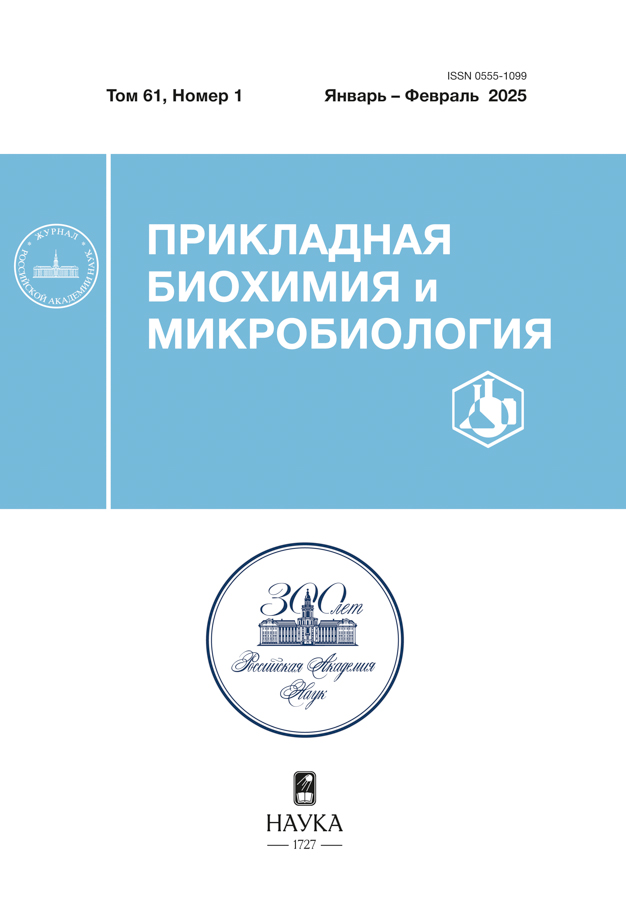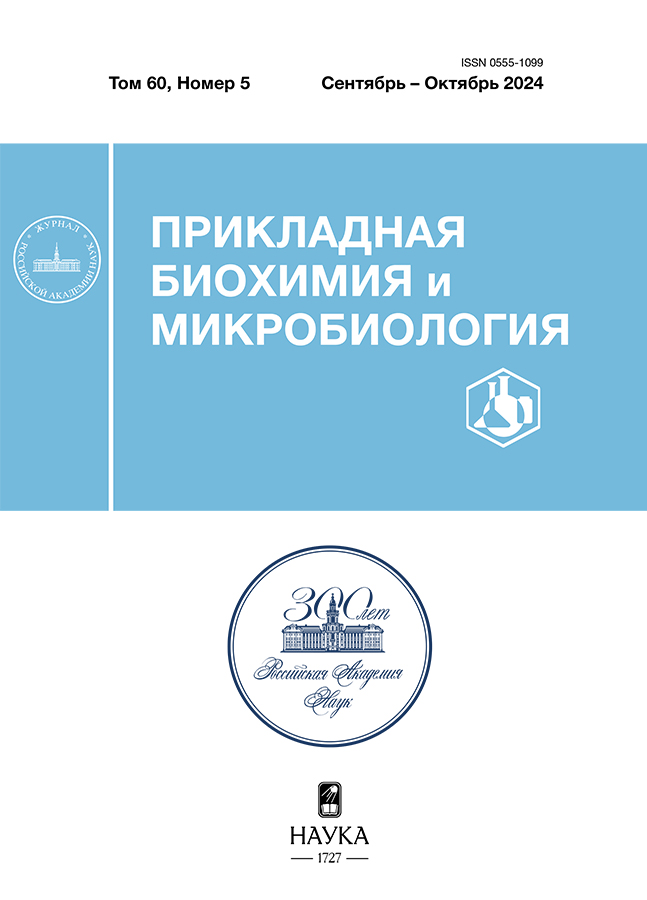Effect of ethanol on the growth of the red microalga Galdieria sulphuraria
- Authors: Bolychevtseva Y.V.1, Stadnichuk I.N.2
-
Affiliations:
- Research Center of Biotechnology, Russian Academy of Sciences
- Timiryasev Institute of Plant Physiology, Russian Academy of Sciences
- Issue: Vol 60, No 5 (2024)
- Pages: 514-523
- Section: Articles
- URL: https://permmedjournal.ru/0555-1099/article/view/681859
- DOI: https://doi.org/10.31857/S0555109924050091
- EDN: https://elibrary.ru/QTGHRD
- ID: 681859
Cite item
Abstract
Polyextremophilic red microalgae of the genus Galdieria, which inhabit hot sulphur springs under conditions unusual for eukaryotes, are capable of heterotrophy. Among the dozens of exogenous organic substrates identified for Galdieria, ethanol is not mentioned as a possible energy source. As it turned out that ethanol did not alter the growth of the model species Galdieria sulphuraria when grown in the dark. In contrast, the growth of microalgae is activated in the light, despite the known cell stressor effect of ethanol. The effect of ethanol as an oxidative stress factor may be indicated by the increase in cellular respiration observed in the dark and also in the light even before the activation of photosynthesis. The marked acceleration of growth of G. sulphuraria culture in the light is most likely due to the stimulation of respiration by ethanol with generation of CO2 and its use by chloroplasts as an additional carbon substrate during the photosynthetic process. Compared to the classical organic substrate glucose, the light-induced growth of G. sulphuraria cultures in the presence of ethanol is less intense. It can be speculated that ethanol stress in light induces the system of two consecutive key enzymes in the primary alcohol metabolism chain (alcohol dehydrogenase (ADH) and acetaldehyde dehydrogenase), which then leads to the eventual complete oxidation of ethanol, resulting in accelerated growth of G. sulphuraria.
Full Text
About the authors
Yu. V. Bolychevtseva
Research Center of Biotechnology, Russian Academy of Sciences
Author for correspondence.
Email: bolychev1@yandex.ru
Bach Institute of Biochemistry
Russian Federation, Moscow, 119071I. N. Stadnichuk
Timiryasev Institute of Plant Physiology, Russian Academy of Sciences
Email: bolychev1@yandex.ru
Russian Federation, Moscow, 127726
References
- Yoon H.S., Müller K.M., Sheath R.G., Ott F.D., Bhattacharya O. // J. Phycol. 2006. V. 42. P. 482–492. https://doi.org/10.1111/j.1529-8817.2006.00210.x
- Pollio A., Cennamo P., Ciniglia C., De Stefano M., Pinto G., Huss V.A.R. // Protist. 2005. V. 156. № 3. P. 287–302. https://doi.org/10.1016/j.protis.2005.04.004
- Liu C., Liu J., Hu S., Wang X., Wang X., Guan Q. // Peer J. 2019. 7:e7189. P. 1–10. https://doi.org/10.7717/peerj.7189
- Muravenko O., Selyakh I., Kononenko N., Stadnichuk I. // Eur. J. Phycol. 2001. V. 36. P. 227–232.
- Miyagishima S., Tanaka K. // Plant Cell Physiol. 2001. V. 62. P. 926–941. https://doi.org/10.1093/pcp/pcab052
- Stadnichuk I.N., Tropin I.V. // Biochemistry (Moscow). 2022. V. 87. № 5. P. 472– 487. https://doi.org/10.31857/S0320972522050050
- Seckbach J. Overview of Cyanidian Biology. / Eds. J. Seckbach, D.J. Chapman. N.Y.: Springer, 2010. 345 p.
- Selosse M.-A., Charpin M., Not F. // Ecol. Lett. 2017. V. 20. № 2. P. 246–263. https://doi.org/10.1111/ele.12714
- Přibyl1 P., Cepák V. // J. Appl. Phycol. 2019. V. 31. P. 1555–1564. https://doi.org/10.1007/s10811-019-1738-9
- Gross W., Schnarrenberger C. // Plant Cell Physiol. 1995. V. 36. № 4. P. 633–648. https://doi.org/10.1007/s10811-019-1738-9
- Oesterhelt С., Schnarrenberger C., Gross W. // Eur. J. Phycol. 1999. V. 34. № 3. P. 271–277. https://doi.org/10.1080/09670269910001736322
- Schmidt R.A., Wiebe M.G., Eriksen N.T. // Biotechnol. Bioeng. 2005. V. 90. № 1. P. 77–84. https://doi.org/10.1002/bit.20417
- Seckbach J., Baker F.A., Shugerman P.M. // Nature. 1970. V. 227. P. 744–745.
- Tischendorf G., Oesterhelt C., Hoffmann S., Girnus J., Schnarrenberger C., Gross W. // Eur. J. Phycol. 2007. V. 42. № 3. P. 243–251. https://doi.org/10.1080/09670260701437642
- Lang I., Bashir S., Lorenz M., Rader S., Weber G. // Appl. Phycol. 2022. V. 3. № 1. P. 1–12. https://doi.org/10.1080/26388081.2020.1765702
- Čížková M., Vítová M., Zachleder V. Microalgae - From Physiology to Application. / Ed. M. Vitova. IntechOpen. 2019. P. 1–17. https://doi.org/10.5772/intechopen.89810
- Selvaratnam T., Pegallapati A.K., Montelya F., Rodriguez G., Nirmalakhandan N., Van Voorhies W., Lammers P.J. // Bioresour. Technol. 2014. V. 156. P. 395–399. https://doi.org/10.1016/j.biortech.2014.01.075
- Duboc P., von Stockar U. // Biotechnol. Bioeng. 1998. V. 58. № 4. P. 426–439. https://doi.org/10.1002/(SICI)1097-0290(19980520) 58:4<428::AID-BIT10>3.0.CO;2-7
- Sloth J.K., Wiebe M.G., Eriksen N.T. // Enzyme Microbial. Technol. 2006. V. 38. № 1–2. P. 168–175. https://doi.org/10.1016/j.enzmictec.2005.05.010
- Schwern, P., Hübner H., Buchholz R. // Eng. Life Sci. 2016. V. 17. № 2. P. 140–144. https://doi.org/10.1002/elsc.201600004
- Voloshina O.V., Bolychevtseva Y.V., Kuzminov F.I., Gorbunov M.Y., Elanskaya I.V., Fadeev V.V. // Biochemistry (Moscow). 2016. V. 81. №. 8. P. 858–870.
- Saeki A., Taniguchi M., Matsushita K., Toyama H., Theeragool, G. Lotong, N., Adachi O. // Biosci. Biotechnol. Biochem. 1997. V. 61. № 2. P. 317–323.
- Jiang Y., Xiao P., Shao Q., Qin H., Hu Z., Lei A., Wang J. // Biotechnol. Biofuels. 2017. V. 10. № 239. P. 1–16. https://doi.org/10.1186/s13068-017-0931-9
- Божков А.И., Мензянова Н.Г., Сысенко Е.И. // Biotechnologia Acta. 2014. V. 7. № 1. P. 93–99.
- Rodriguez-Zavala J.S., Rodriguez-Zavala M.A., Ortiz-Cruzm R., Moreno-Sanchez R. // J. Eukaryot. Microbiol. 2006. V. 53. № 1. P. 36–42. https://doi.org/10.1111/j.1550-7408.2005.00070.x
- Sloth J.K., Jensen H.C., Pleissner D., Eriksen N.T. // Bioresource Technology. 2017. V. 238. P. 296–305. http://dx.doi.org/10.1016/j.biortech.2017.04.043
- Stadnichuk I.N., Semenova L.R., Smirnova G.P., Usov A.I. // Appl. Biochem. Microbiol. 2007. V. 43. P. 88–93.
- Sentsova O.Yu. // Botanichesky J. 1991. V. 76. № 1. P. 69–79.
- Averina N.G., Kozel N.V., Shcherbakov R.A., Radyuk M.S., Manankina E.E., Goncharik R.G., Shalygo N.V. // Proceedings Nat. Acad. Sci. Belarus. Biol. Series. 2020. V. 65. P. 7–15. https://doi.org/10.29235/1029-8940-2020-65-1-7-15
- Lowrey J., Brooks M.S., McGinn P.J. // J. Appl. Phycol. 2015. V. 27. P. 1485–1498. https://doi.org/10.1007/s10811-014-0459-3
- Perez-Garcia O., Escalante F.M.E., de Bashan L.E., Bashan Y. // Water Res. 2011. V. 45. P. 11–36. https://doi.org/10.1016/j.watres.2010.08.037
- Saura P.P., Chabi M., Corato A., Cardol P., Remacle C. // Front. Plant Sci. 2022. P. 1–18. https://doi.org/10.3389/fpts.2022
- Rossoni A.W., Schönknecht G., Lee H.L. Rupp R.L., Flachbart S., Mettler-Altmann T. et al. // Plant Cell Physiol. 2019. V. 60. № 3. P. 702–712. https://doi.org/10.1093/pcp/pcy240
- Lin G.-H., Hsieh M.-C., Shu H.-Y. // Int. J. Mol. Sci. 2021. V. 22. P. 9921. https://doi.org/10.3390/ijms22189921
- Barbier G., Oesterhelt C., Larson M.D., Halgren R.G., Wilkerson C., Garavito R.M. et al. // Plant Physiol. 2005. V. 137. № 2. P. 460–474. https://doi.org/10.1104/pp.104.051169
- Curien G., Lyska D., Guglielmino E., Westhoff P., Janetzko J., Tardif M. et al. // New Phytologist. 2021. V. 231. P. 326–338. https://doi.org/10.1111/nph.17359
- Stadnichuk I.N., Rakhimberdieva M.G., Bolychevtseva Yu.V., Yurina N.P., Karapetyan N.V., Selyakh I.O. // Plant Sci. 1998. V. 136. № 1. P. 11–23.
- Oesterhelt C., Schmälzlin E., Schmitt J.M., Lokstein H. // Plant J. 2007. V. 51. P. 500–511. https://doi.org/10.1111/j.1365-313X.2007.03159.x
- Roth M.S., Westcott D.J., Iwai M., Niyogi K.N. // Commun. Biol. 2019. V. 2. P. 347. https://doi.org/10.1038/s42003-019-0577-1
Supplementary files

















